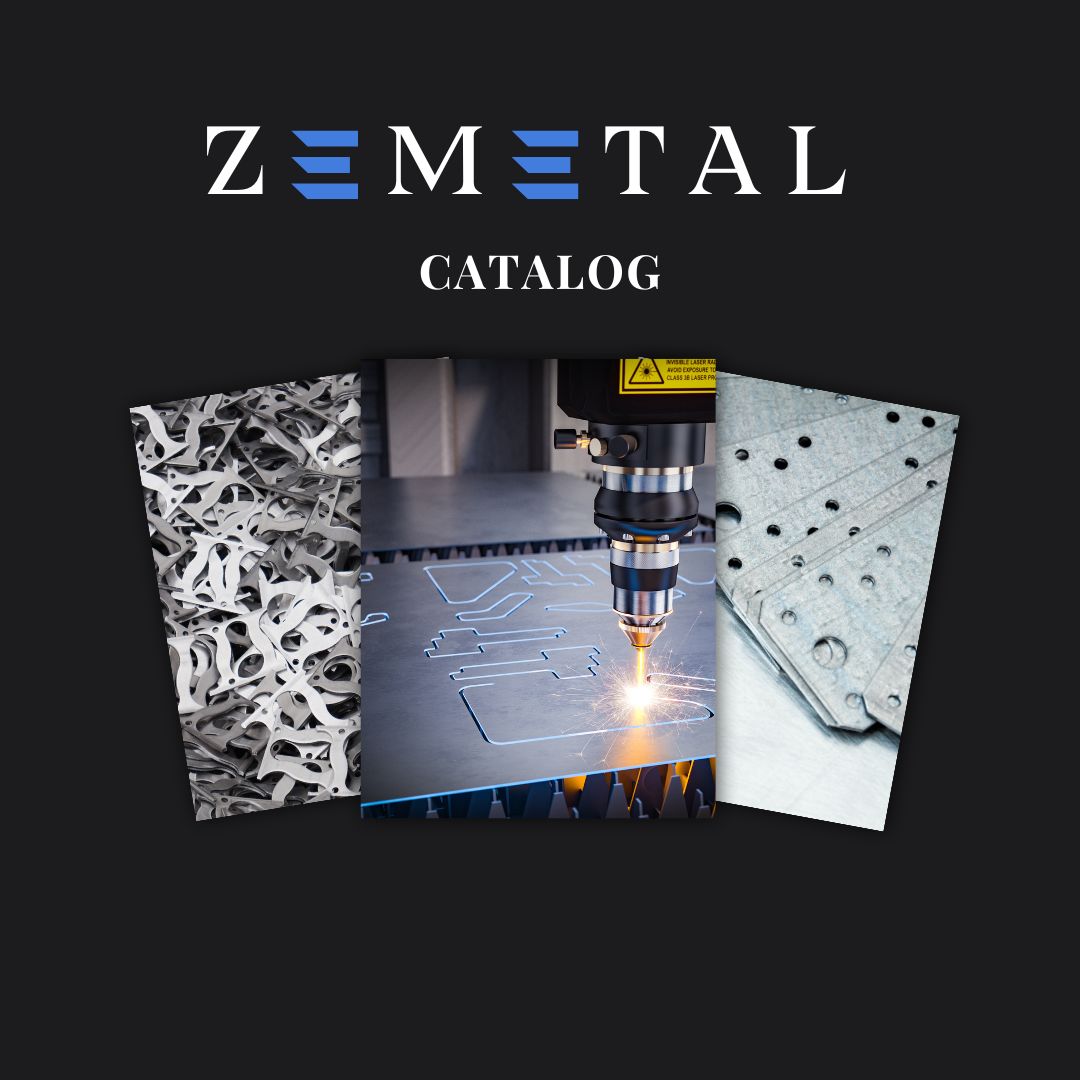Has anyone marveled at the seamless transformation of flat metal sheets into detailed, complex shapes? This magic is achieved through deep drawing operation, a critical technique in metal fabrication.
Drawing from years of expertise in metal fabrication, we offer insights into this essential and detailed process, ensuring you get the most accurate and practical information.
Deep drawing operation is more than a manufacturing process; it’s a cornerstone of innovation in metalwork. Its ability to create detailed and robust components makes it invaluable in various industries.
In this guide, you’ll learn about the techniques, advantages, and applications of deep drawing, equipping you with knowledge to enhance your fabrication projects.
Read on to deepen your understanding of deep drawing operation.
1. Understanding the Basics of Deep Drawing
Deep drawing, a key fabrication technique that involves stretching metal sheets into desired shapes with a die and punch mechanism, is fundamental for creating high-quality, uniform, and detailed metal parts. Material selection, thickness, and die design are crucial for the success of the operation, where balancing material strength with malleability is key.
This process is increasingly important, as highlighted by Dataintelo, which projects the global deep drawing market to grow at a CAGR of 5.3% from 2021 to 2028. Deep drawing’s ability to produce strong, seamless components is essential in a range of industries, from automotive to consumer electronics. Understanding its principles is key to consistent, flawless results in metal fabrication, highlighting its market growth.
2. Advantages of Deep Drawing
Building on the understanding of the basics of deep drawing, it’s clear this technique offers several benefits. Let’s explore the key advantages that make deep drawing an attractive option for metal fabrication:
Superior Material Efficiency
Deep drawing is renowned for its material efficiency. It minimizes waste by effectively utilizing the metal sheet, which is crucial in cost and resource management. For example, producing seamless automotive parts using deep drawing reduces material scraps compared to traditional methods.
High Precision and Consistency
The high precision and consistency achievable with deep drawing are unmatched. This method ensures uniformity across large production runs, making it ideal for industries requiring high-standard components. In witnessing its application, the precision of deep drawing has consistently impressed me, particularly in creating detailed and uniform shapes.
Flexibility in Design
Deep drawing offers remarkable flexibility in design, accommodating a variety of shapes and sizes. This adaptability is essential for custom fabrication projects, where unique specifications are a priority. The process’s ability to handle different metals and alloys further enhances its versatility in diverse manufacturing contexts.
3. Design Considerations in Deep Drawing
When delving into deep drawing, several critical design considerations must be kept in mind to ensure optimal results. Here are some essential factors to consider:
- Material Selection: The choice of material greatly influences the success of deep drawing. Metals with high ductility and low yield strength, such as aluminum and certain steel grades, are preferred for their formability.
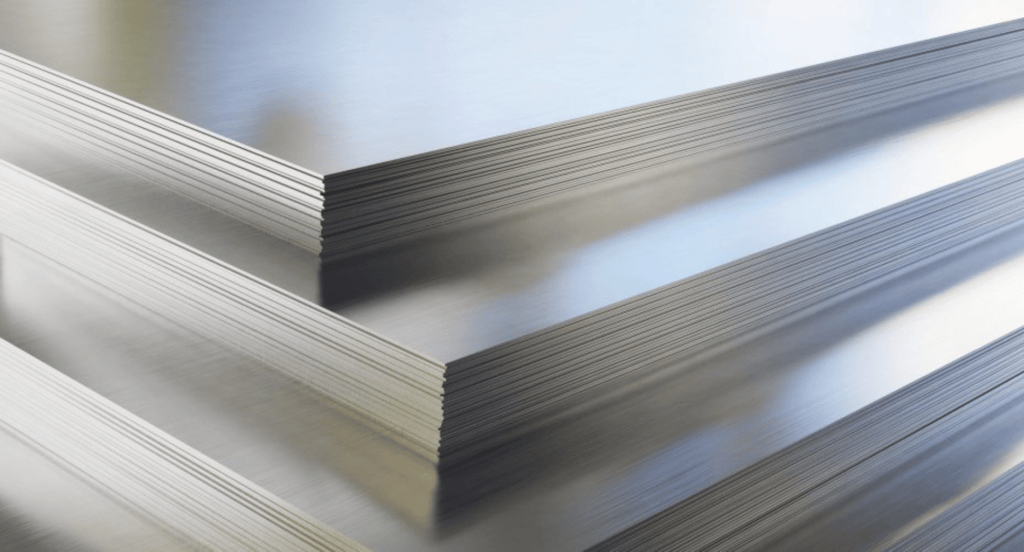
- Thickness of the Material: Uniform thickness in the starting material is crucial for consistent deep drawing. Variations can lead to defects like tearing or wrinkling during the process.
- Die Design: The design of the die, including its radius and clearance, plays a vital role. A well-designed die minimizes material stress, reducing the risk of tears or deformities.
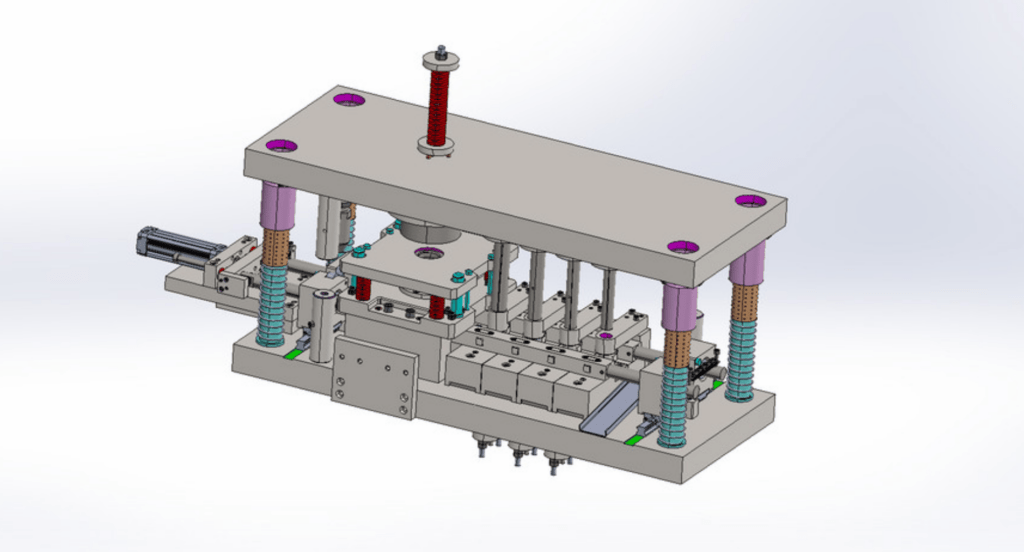
- Punch Shape and Size: The punch should complement the die in shape and size. Its design affects how the metal is stretched and formed, playing a crucial role in achieving the desired end product.
- Lubrication: Adequate lubrication is essential to reduce friction between the die and the metal sheet.From experience, the right lubricant not only prevents defects but also extends the life of the die.
- Blank Holder Pressure: The pressure applied by the blank holder needs careful adjustment. It must be sufficient to prevent wrinkling but not so high as to hinder the metal flow or cause tearing.
4. Advanced Techniques in Deep Drawing
The field of deep drawing is continuously evolving with the introduction of advanced techniques. These innovations enhance precision and possibilities in metal fabrication. Let’s delve into some techniques that represent the forefront of deep drawing technology:
Progressive Deep Drawing
Progressive deep drawing is a step-wise technique where a sheet metal undergoes multiple stages of deformation. This method is ideal for detailed shapes that require gradual forming to prevent tearing or warping, ensuring high precision in complex parts. Having observed its effectiveness, it’s clear that this approach remarkably enhances the quality of the final product.
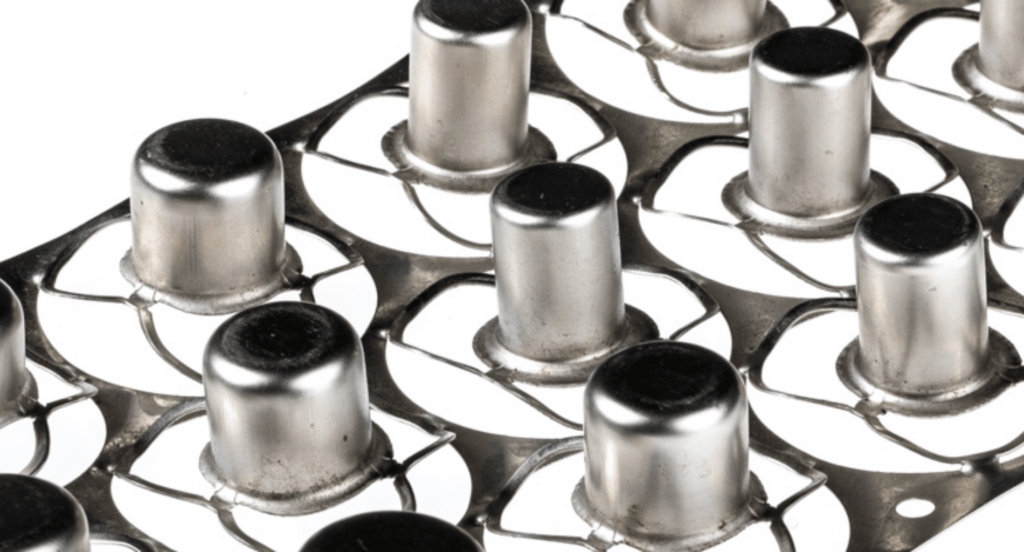
Reverse Deep Drawing
Reverse deep drawing stands out for its unique approach, where metal sheets are formed in an upward direction against the punch. This method is particularly effective for crafting unconventional and detailed shapes. Zemetal utilizes this technique to expand the possibilities of metal fabrication, allowing for greater flexibility in design and application.
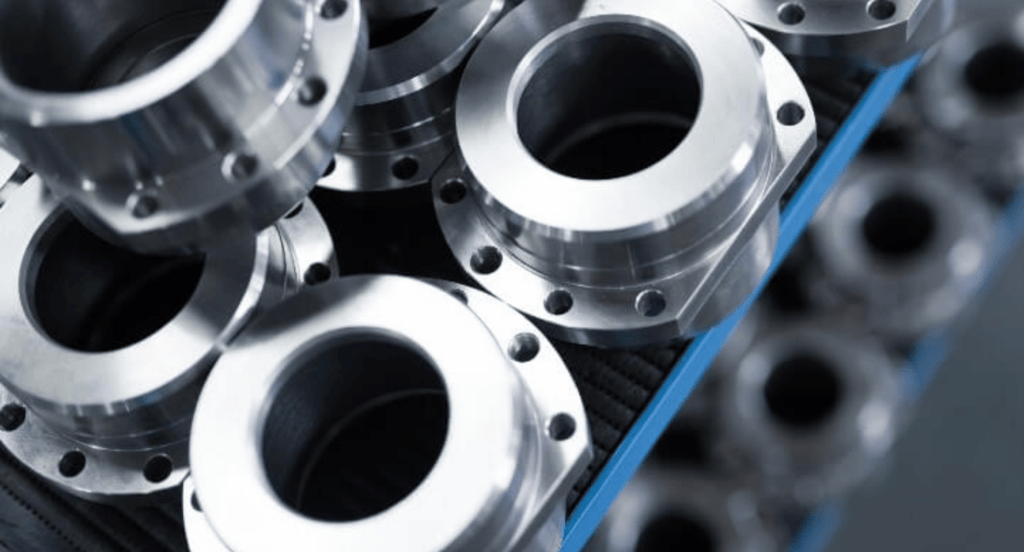
Rapid Prototyping Integration
Rapid prototyping, particularly 3D printing, is now being integrated into deep drawing to create precise and complex dies quickly. This approach significantly reduces development time and cost, making it easier to experiment with unique designs and shapes.
5. The Deep Drawing Procedure
Following the exploration of advanced techniques in deep drawing, understanding the step-by-step procedure becomes crucial. Here is a detailed breakdown of the deep drawing process, explaining each critical stage:
Step#1 Selecting the Appropriate Material
The process begins with the selection of suitable material, typically a metal known for its ductility and strength, such as aluminum or certain grades of steel. This choice is critical, as the material’s properties directly impact its ability to undergo deformation without failing.
Step#2 Designing the Die and Punch
The next step involves designing the die and punch, which must be tailored to the specific geometry of the desired part. Precision in this design is key, as it influences the metal flow and ultimately determines the shape and depth of the final product.
Step#3 Applying Lubrication
Before shaping, the metal sheet is thoroughly lubricated. This step is crucial to minimize friction between the metal and the die, aiding in smooth drawing and preventing defects like tearing. The choice of lubricant can also affect the quality of the final surface finish.
Step#4 Placing the Metal Sheet
The lubricated metal sheet is then carefully placed over the die. Correct placement is essential for achieving uniform deformation and avoiding issues such as uneven thickness, which can compromise the integrity and aesthetic of the final product.
Step#5 Executing the Drawing Process
During the drawing process, the punch moves downward, pressing the metal sheet into the die to form the desired shape. This stage requires precise control of speed and pressure to ensure the metal flows evenly into the die, maintaining the consistency and quality of the formed part.
Step#6 Removing and Finishing the Formed Part
Finally, the formed part is removed from the die. It may then undergo additional finishing processes, such as trimming excess material, annealing to relieve stresses, or surface treatments for corrosion resistance and improved appearance, to meet the specific requirements of the application.
6. Applications of Deep Drawing Operation
Deep drawing operation, with its versatility and precision, has found applications in numerous industries. Let’s take a closer look at how this technique is applied in different sectors, showcasing its wide-ranging utility:
Automotive Industry
In the automotive industry, deep drawing is crucial for manufacturing parts like fuel tanks, fenders, and panels. The process allows for the creation of durable and lightweight components, essential for vehicle efficiency and safety. The precision of deep drawing ensures that these parts meet the stringent standards required in automotive manufacturing.
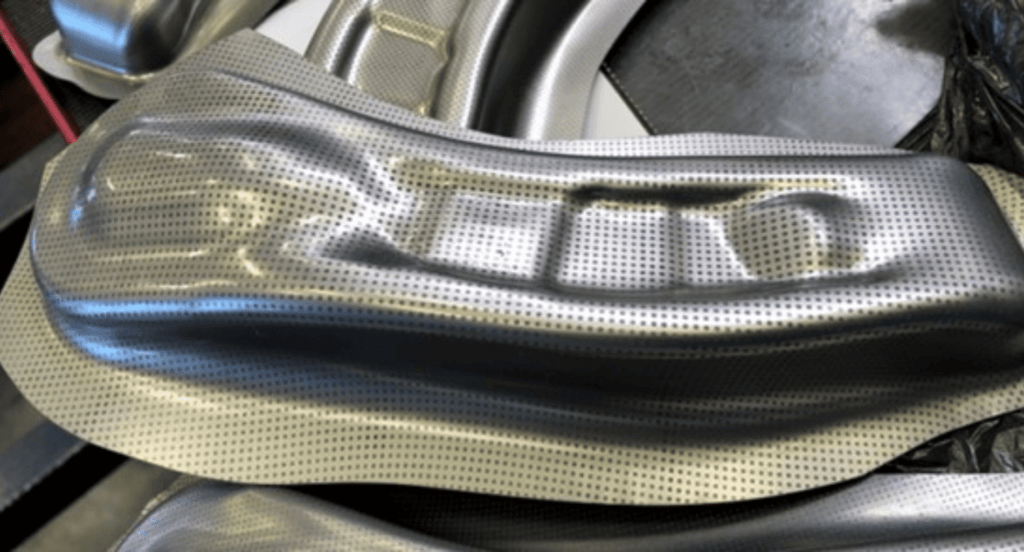
Consumer Electronics
Deep drawing is crucial in the consumer electronics sector, particularly for crafting parts like casings and enclosures. Zemetal harnesses this method to manufacture metal components with detailed shaping, providing both functional protection and aesthetic value for electronic devices. This showcases deep drawing’s capacity to address the compact and precise design demands of modern electronics.
Kitchenware and Appliances
In the realm of kitchenware and appliances, deep drawing is used to form items such as pots, pans, and sinks. The uniformity and smooth finish achieved through this process are crucial for both the functionality and aesthetics of these products. This technique’s ability to produce seamless and hygienic surfaces makes it ideal for culinary applications.
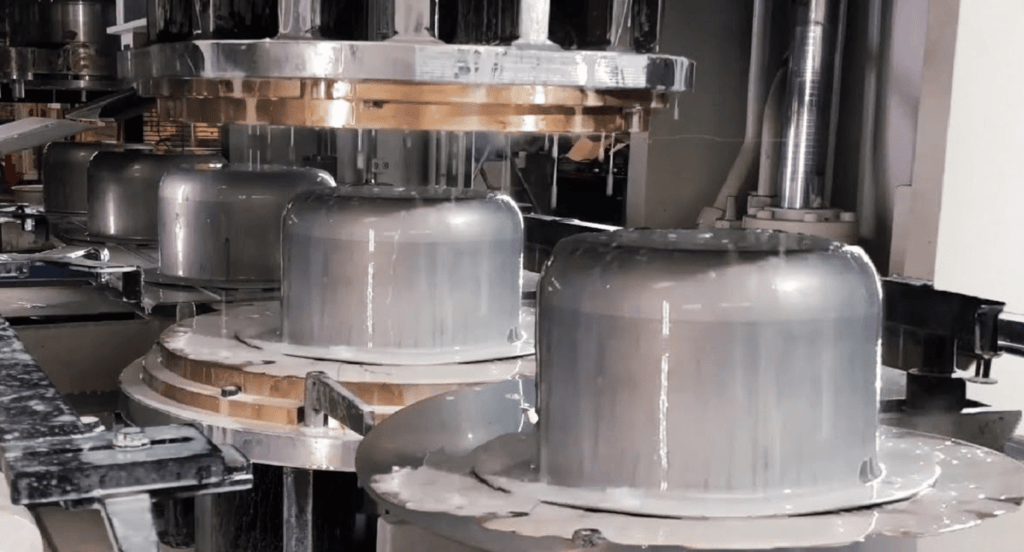
7. Challenges and Solutions in Deep Drawing
In the realm of deep drawing, certain challenges can impact the quality and efficiency of the process. However, with every challenge comes a solution that enhances the technique. Let’s explore some common issues and their effective resolutions:
Control of Metal Flow
Ensuring even metal flow during deep drawing is challenging, as uneven distribution can lead to defects in the formed part. This issue is particularly prevalent in complex shapes where the metal must stretch and compress in different directions. Implementing software like finite element analysis (FEA), helps in predicting and controlling metal flow. Modifying tools and processes as per simulations can greatly reduce flow issues.
The table below outlines key strategies and tools for ensuring even metal flow during deep drawing, highlighting the importance of simulations and tool modifications to mitigate defects in complex-shaped parts.
| Strategy | Tool/Process | Benefit |
| Finite Element Analysis (FEA) | Simulation Software | Predicts metal flow, identifies potential issues early |
| Tool Design Modification | Custom Tools | Tailors tooling to promote even flow and reduce stress |
| Process Optimization | Adjusted Parameters | Fine-tunes drawing speed, pressure for optimal flow |
| Material Selection | Specific Metal Alloys | Chooses materials with favorable stretching properties |
| Lubrication Enhancement | Advanced Lubricants | Reduces friction, ensuring smoother metal flow |
Thickness Variation
Maintaining uniform thickness throughout the deep-drawn part is a common difficulty. Variations can weaken the structure, leading to failures in application. By utilizing advanced techniques like variable blank holder force (VBHF), offers better control over material flow, thus maintaining consistent thickness. Additionally, precise calibration of drawing speed and pressure can further ensure uniformity in the final product.
Tool Wear
Tool wear is a significant concern in deep drawing, as it affects the quality of the finished product and leads to increased maintenance costs. Constant friction and pressure can rapidly degrade the die and punch. Using higher-grade, wear-resistant materials for tools can extend their life. Additionally, regular maintenance and lubrication help in minimizing wear.
8. 3 Factors When Considering Deep Drawing Operations
Reflecting on the challenges and solutions in deep drawing highlights the importance of certain factors in the decision-making process. Here are some crucial aspects to consider when planning deep drawing operations:
#1 Consulting with Experts
Engaging with industry experts is invaluable. Their insights on material properties, tool design, and process optimization can drastically improve outcomes. For example, a consultation with a metallurgist could reveal a more suitable material choice for a specific application, enhancing product quality and process efficiency.
#2 Compliance with Industry Standards
In deep drawing operations, adhering to established industry standards is essential. These guidelines guarantee that the produced items satisfy stringent quality and safety criteria. Particularly in the automotive sector, compliance with standards like ISO/TS 16949 is vital. This adherence ensures manufacturing of automotive parts meets industry safety and performance standards.
#3 Production Scale
The scale of production plays a crucial role in deep drawing operations. Large-scale production demands significant investment in advanced machinery and technology to achieve efficiency and cost-effectiveness. Conversely, smaller production runs may require a more basic setup, focusing on flexibility and minimizing initial costs. The scale decision affects equipment choice, materials, and the deep drawing method.
Conclusion
Through this exploration of deep drawing operations, we’ve illuminated the key aspects and practical considerations essential for effective metal fabrication. This guide aims to assist businesses in optimizing their deep drawing processes, ensuring quality and efficiency.
Zemetal stands ready to support your journey in mastering deep drawing operations. For more information or to discuss how we can assist you, contact us today.
Dive Deeper Into Our Resources
Looking for more diverse service options? Browse through our handpicked selections:
Still haven’t found what you’re looking for? Don’t hesitate to contact us. We’re available around the clock to assist you.








